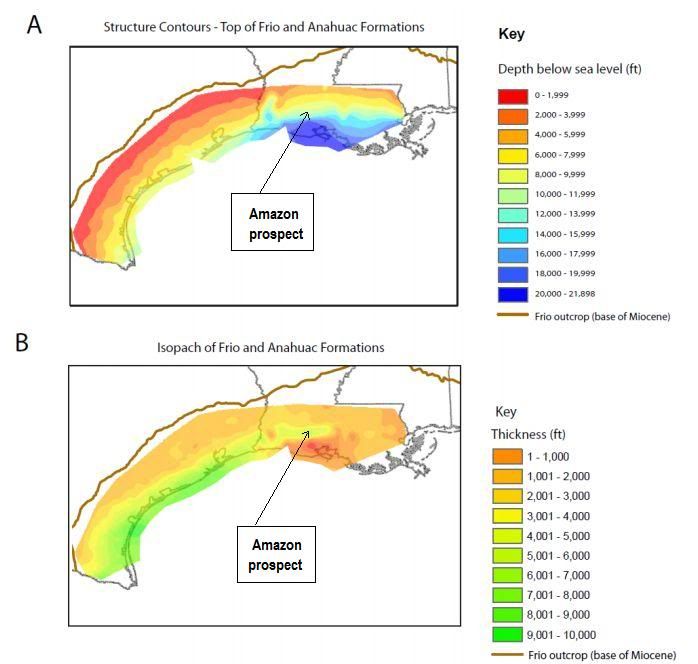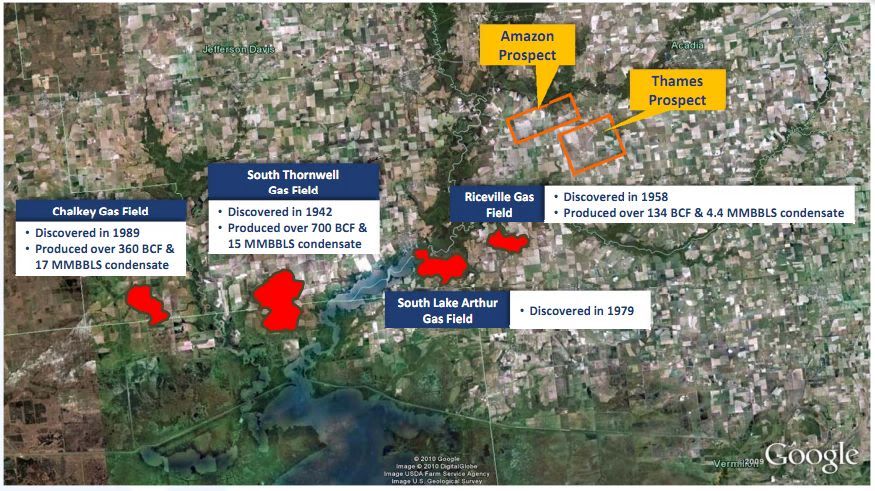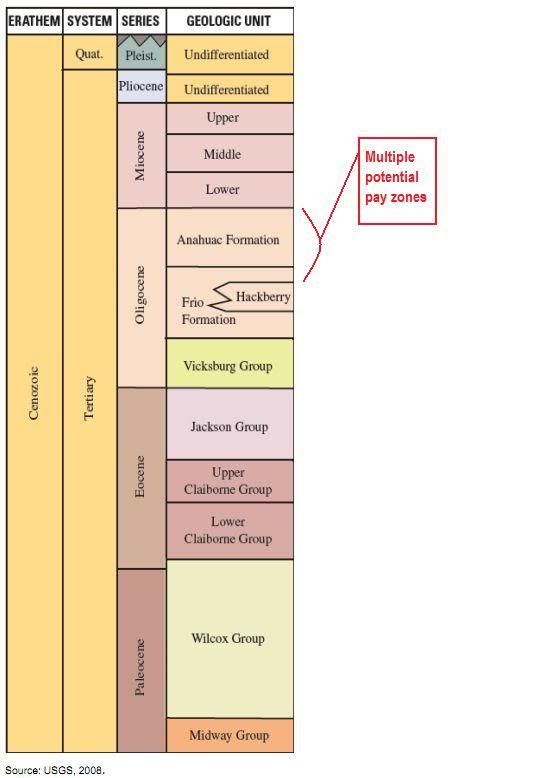Hi all,
Great to see a timely Investor Update today on QPNs activities. I think what is worth noting here is that QPN clearly has a well planned and defined strategy in place to develop towards being hopefully a successful mid-tier company with a diverse range of oil and gas projects, including both those in-progress as well as those in-the-pipeline. Clearly diversing into a range of partnerships alleviates the uncertainty associated with the risky nature of the oil & gas game, thus emulating the approach that has contributed towards making other companies such as Caza Oil & Gas a success to date.
Anyway, I have been doing a bit of reading on the side regarding the Amazon / Thames project. As they stated, these prospects themselves are classed as fault dependent anticlines with similar structural trapping style to other nearby successful producers like Lake Arthur, Chalkley and Riceville gas field which are also on trend in the Miogyp play fairway, as clearly illustrated (below) in their presentation. I think it is well worth restating the potential here - the South Thornwell gas field produced a whooping 700 billion cubic feet of gas and is situated approximately 20 Km to the SW, and just further afield (~30 Km SW) the Chalkey Gas field with 360 billion cubic feet of gas. Both of these plays also produced an enormous amount of condensate (mean 16 MMBBLS). Closer by, the Lake Arthur field, being a giant discovery in 1979 was subsequently developed by the Dow Chemical Company.
Interestingly, most of the productive areas in southern Louisiana are derived from Tertiary marine and shale sediments lying across the Louisiana portion of the Gulf Coast Salt Dome Basin. Structurally these are primarily low-angle faults and with what they call diapiric salt features (a diaper is a fancy word for a fold or dome like an anticline). These features provide highly prospective formations for housing oil (condensates) and gas plays. Now our primary target in the Amazon / Thames prospect are sandstones formations located in the upper Frio Formation, being the same active reservoir from which other plays in the region have been previously been successful, as cited above. I have marked out this target strata in the graph below where we might expect to encounter multiple condensate and gas pay zones.
It is worth noting based on the structural contours of the stratigraphic zones that the upper sands of the Oligocene Frio and lower Anahuac formations (Camerina and Miogyp sands), are likely to be slightly shallower where Caza and their partners are drilling, in comparison to the other developed gas fields in the Miogyp play fairway. This is quite evident in Fig A where it appears to extend to a depth of between 14,000 to 15,999 feet depth, being consistent with the zone targeted by Caza et al.
Now comes the interesting part - if we review again the South Lake Arthur field, which as a reminder is only approximately 10 Km SW of the Amazon prospect, over 25 wells have been drilled into this prospect alone. What is highly significant is that these cores have determined the Miogyp sandstone reservoir to be relatively thick, ranging between 400 to 800 feet. Hence, it is no surprise why this field is estimated to house over ONE TRILLION cubic feet of gas! More importantly, this area is sandwiched between prodelta and marine shales which are in themselves excellent source and seal rocks. Remember, these are the same stratum that the Caza et al. drilling program are targeting in the Amazon (Arran) play. The graph below (Fig B) nicely illustrates my point about the Miogyp thickness. It is worth pointing out here that the Amazon play (Thames as well) as I have highlighted with an arrow, are located exactly where the Anahuac and Frio formation (Miogyp sandstone) are considerably thicker (shaded in light green), being somewhere around 4,000 to 5,000 feet in thickness. This might suggest that if Caza et al makes a discovery, then we might be looking at an enormous pay load of gas / condensate over and above the conservative mean estimates of 375 BCF and 37 MMBBLS, and perhaps realistically being closer to the P10 unrisked resource potential of 736 BCF and 73 MMBBLS. From hear-say, this also would appear to be consistent with the more "bullish" estimates that Caza O&G chairman Mr John McGoldrick inferred or discussed during his recent presentation at an investors forum in London.
The Amazon play is clearly a highly significant prospect which is anticipated to encounter multiple potential pay zones of oil (condensate) and gas. We all know that the COS is considerably high, around 35%. Success here would result in a company maker for all the main players involved of which include Quest Petroleum (15% wi), Tango Petroleum (17.5% wi), and of course Caza Oil & Gas.
Exciting times ahead, good luck all!
nb. the above are from my notes so any thoughts, comments or constructive criticism are always welcome...
Add to My Watchlist
What is My Watchlist?











